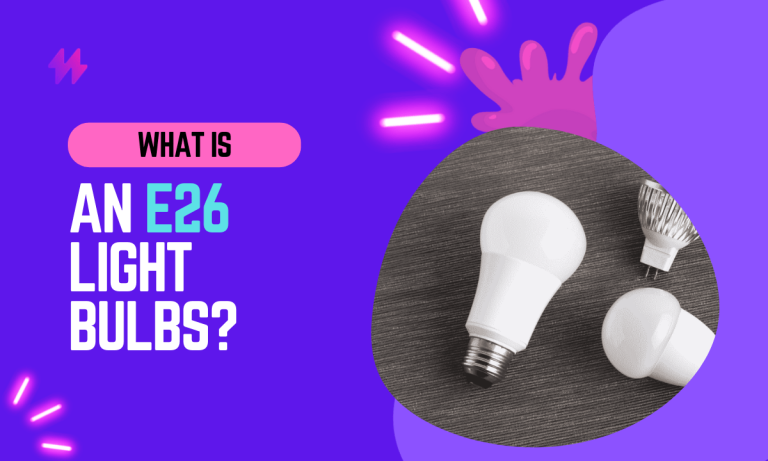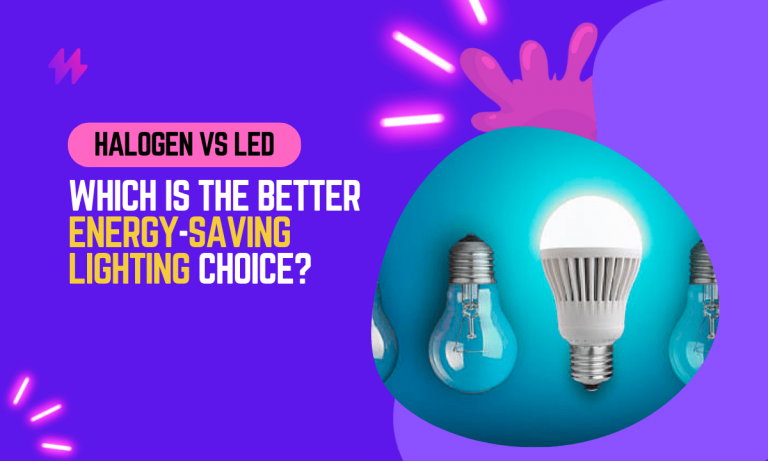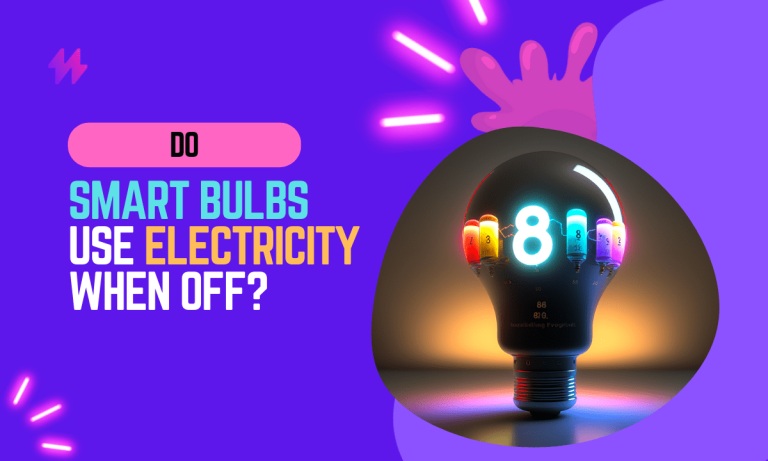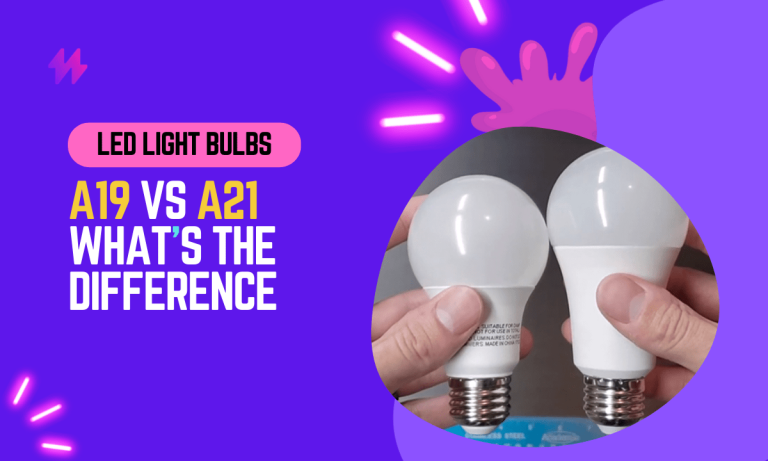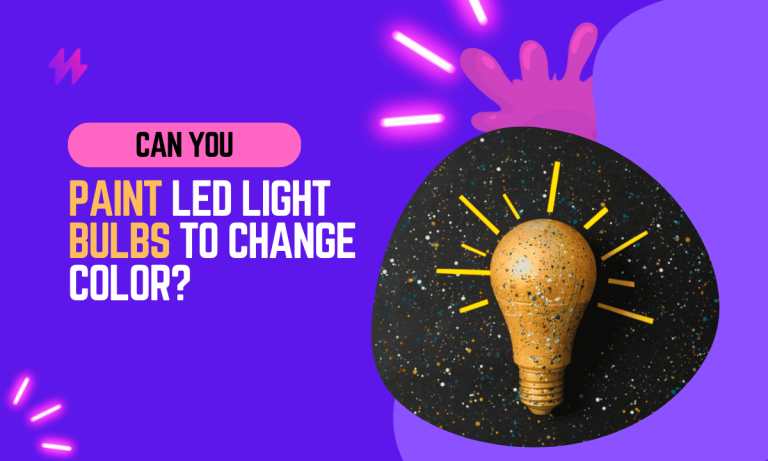Should I Switch From CFL To LED Light Bulb?
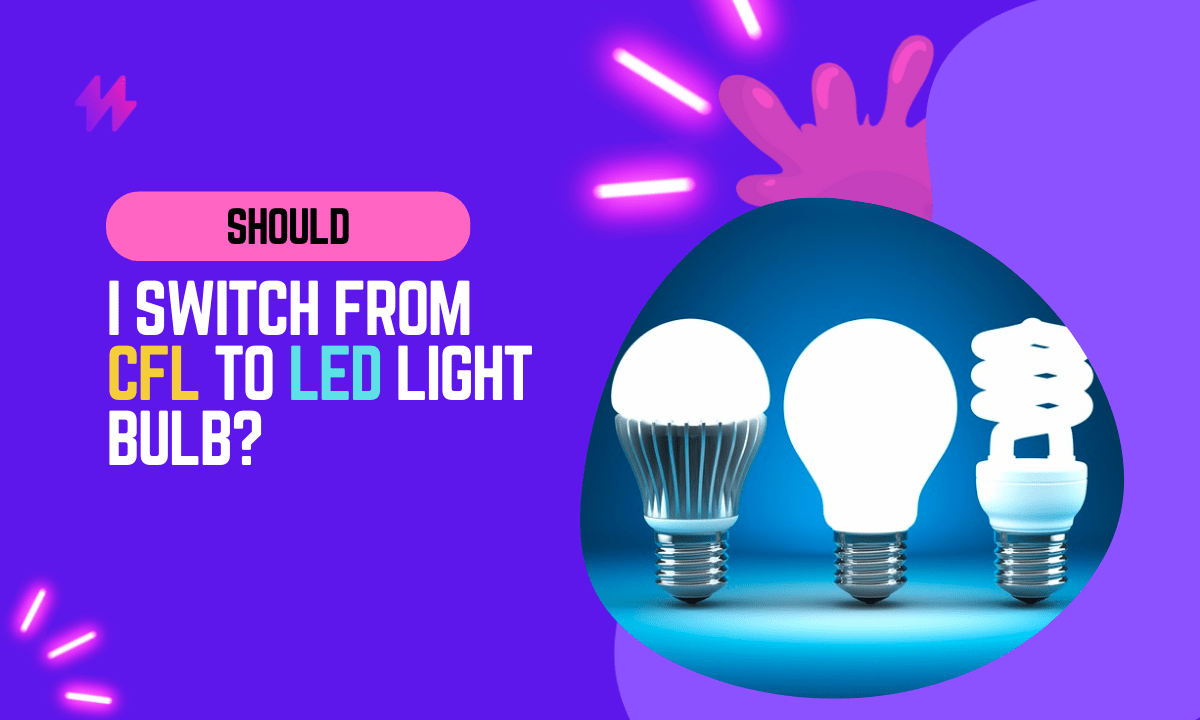
Compact fluorescent lamps (CFLs) and light-emitting diodes (LEDs) are two popular choices for energy-efficient lighting in homes and businesses. While both types of bulbs use less energy and last longer than traditional incandescent bulbs, there are some critical differences between the two that make LEDs a more attractive option in many cases.
In this blog post, we’ll look at the pros and cons of each type of bulb and explore whether it’s worth switching from CFL to LED light bulb.
Switching from compact fluorescent light bulbs (CFLs) to light-emitting diode (LED) lights can enhance the efficiency and quality of your lighting solution. As a result, many homeowners are considering the transition, especially with the growing number of LED replacement options now available in various light fixtures.
Should I Switch from CFL to LED Light Bulb: Understanding CFLs and LEDs
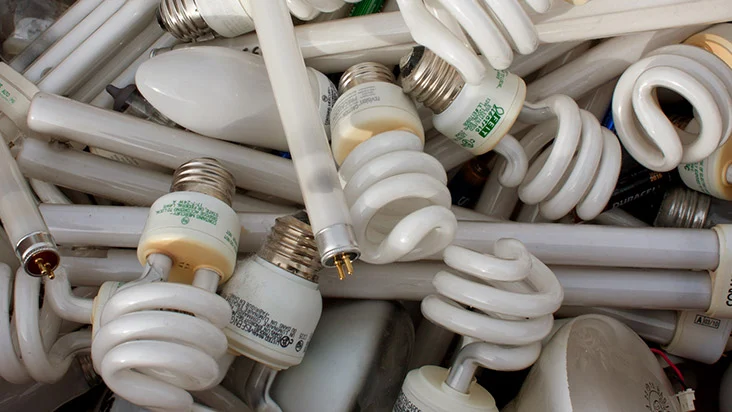
CFLs are a type of fluorescent lamp that use less energy and last longer than traditional incandescent bulbs. They work by using an electric current to excite a gas (usually mercury vapor) inside a glass tube, which produces ultraviolet (UV) light. This UV light is then converted into visible light by a phosphor coating on the inside of the tube.
LEDs, on the other hand, are solid-state devices that use a semiconductor material to produce light. When an electric current is applied to the semiconductor, it emits photons, which are particles of light. LED bulbs are made up of many individual LED chips arranged in a package, and they are known for their long life, energy efficiency, and durability.
Also read: 5 Reasons to Switch to Ecosmart Light Bulbs
CFLs, while energy-efficient, have limitations such as a slower warm-up time and decreased performance in colder temperatures. In contrast, LED lights not only have an improved lifespan and efficiency but also provide better light output compared to traditional incandescent lighting, making them a superior choice for homeowners looking to enhance their lighting solutions. Transitioning to LED lamps offers significant advantages, including less energy consumption and the potential to reduce the electricity bill significantly in the long run. Consider these advantages if you’re wondering, “should I switch from CFL to LED light bulb?
Is Replacing CFLs With LEDs Worth It? Exploring Energy Efficiency and Beyond
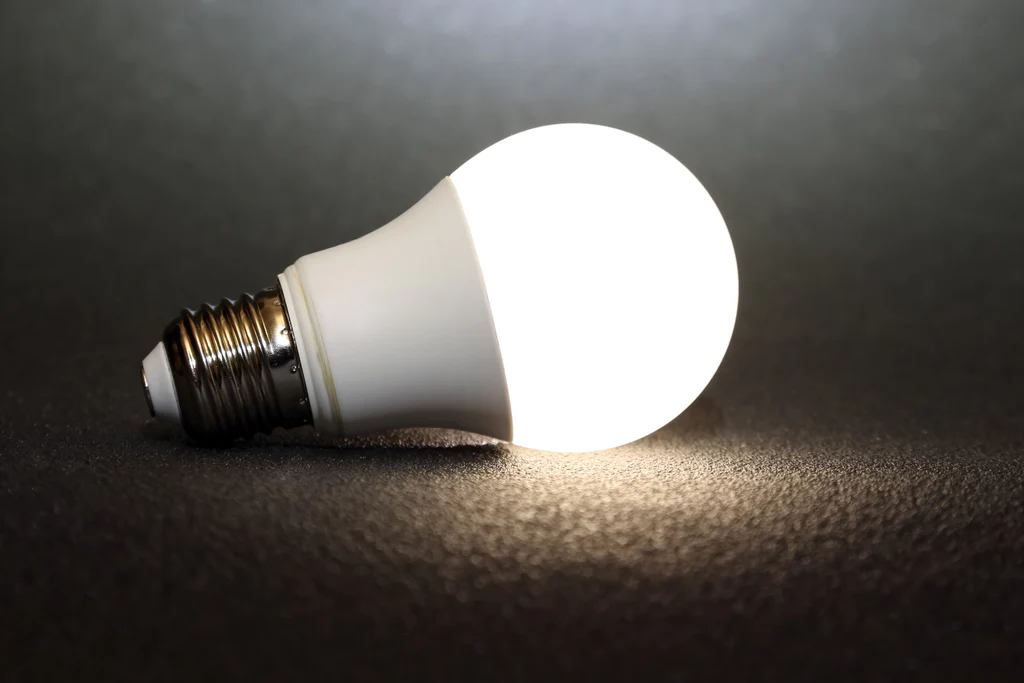
It is generally worth replacing CFLs with LEDs due to the several advantages that LEDs offer. LEDs are more energy efficient, have a longer lifespan, produce a higher quality of light, and are more durable than CFLs. While the initial cost of LED bulbs may be higher, they can save you money in the long run.
However, it’s important to consider the specific needs of your lighting situation when deciding whether to replace your CFLs with LEDs. For example, if you only use your lights for a few hours a day and are looking for a budget-friendly option, CFLs may still be a suitable choice. On the other hand, if you use your lights for long periods of time or are looking for the most energy-efficient and durable option, LEDs may be the better choice.
Switching to light-emitting diode bulbs can significantly improve not just the energy efficiency but also the lighting quality in your home. These efficient light bulbs can provide a more uniform light and are particularly appealing for various applications like recessed lighting or porch lights, ensuring that your living spaces are as well-lit and inviting as possible.
Pros and Cons of CFLs vs LEDs: Understanding Key Differences
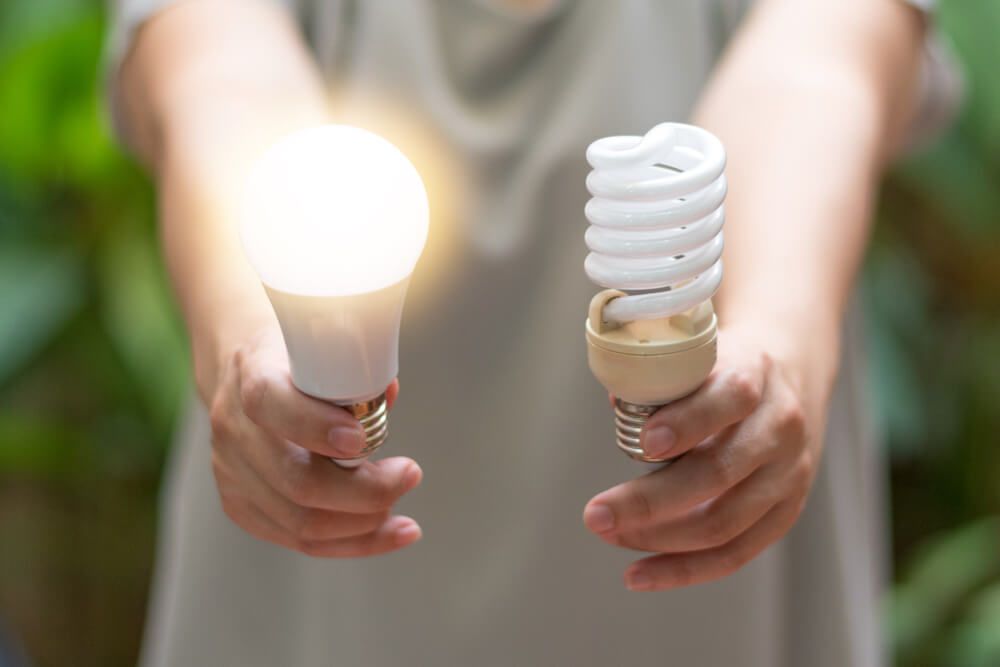
Understanding Energy Efficiency: A Comparison of CFLs and LEDs
One of the main advantages of both CFLs and LEDs is their energy efficiency. Both types of bulbs use significantly less energy than traditional incandescent bulbs, which means you can save money on your energy bills by switching to either option. However, LEDs are generally more energy efficient than CFLs.
According to the U.S. Department of Energy, LEDs use about 75% less energy than incandescent bulbs and last up to 25 times longer. In comparison, CFLs use about 75% less energy than incandescent bulbs and last up to 10 times longer.
While both types of bulbs are energy efficient, the higher energy efficiency of LEDs means they can save you more money in the long run. According to the Department of Energy, if you replaced all the incandescent bulbs in your home with LED bulbs, you could save about $75 per year in energy costs.
Also read: Do Smart Bulbs Use Electricity When Off?
The transition to LED lighting brings a plethora of benefits that can enhance the quality of lighting in your home. Consulting with a lighting engineer can help you determine the best types of electric light bulbs to suit your needs, whether you’re installing recessed lights or replacing outdoor holiday lights.
Lifespan of CFLs and LEDs: A Comprehensive Comparison
Another major advantage of both CFLs and LEDs is their long lifespan. Traditional incandescent bulbs need to be replaced much more frequently than either CFLs or LEDs, which can be a hassle and add up over time.
LEDs are known for their particularly long lifespan, with some bulbs lasting up to 25,000 hours or more. In comparison, CFLs typically last for about 8,000 to 15,000 hours. This means that you’ll need to replace your LED bulbs much less often than your CFL bulbs, which can save you money in the long run.
The longevity of LED lights significantly reduces the hassle of frequent replacements, especially when compared to regular incandescent bulbs that require changing much sooner. By investing in quality Philips LED alternatives, homeowners can enjoy not only lower energy bills but also a well-lit home, showcasing the efficiency of LEDs that use less energy and offer more directional light.
Durability: A Key Factor in CFLs and LEDs
In addition to their long lifespan, LEDs are also known for their durability. Because they are made up of solid-state devices rather than fragile glass tubes, they are less prone to breakage and can withstand more physical abuse. This makes them a good choice for use in areas where bulbs may be bumped or knocked around, such as in outdoor fixtures or in high-traffic areas.
CFLs, on the other hand, are more fragile due to their glass tubes. While they are less prone to breakage than incandescent bulbs, they are more fragile than LEDs and may not be the best choice for use in areas where they may be bumped or knocked around.
LED lights not only excel in durability, but their robust construction makes them ideal for various settings. Homeowners can confidently replace standard incandescent bulbs with LEDs, knowing that they will enjoy a longer bulb life and a significant reduction in lighting-related expenses—LEDs use less energy and offer more directional light compared to compact fluorescent lighting options.
Understanding Quality of Light in CFLs and LEDs: Pros & Cons
One area where LEDs tend to outperform CFLs is in the quality of light they produce. LED bulbs are available in a wide range of color temperatures, which refers to the hue of the light they produce.
For example, a bulb with a “warm white” color temperature will produce a softer, yellowish light, while a bulb with a “cool white” color temperature will produce a brighter, bluish light. This means you have more flexibility in terms of the type of light you want to produce with LEDs.
CFLs, on the other hand, tend to produce a softer, yellowish light that may not be as appealing to some people. Additionally, CFLs can take a few minutes to warm up and reach their full brightness, which can be inconvenient in some situations.
Comparing LEDs to CFLs reveals substantial differences that can greatly affect your home’s lighting experience. The ability to choose from various color temperatures with LED bulbs can enhance not only your ambiance but also the aesthetic appeal of your space, making them a desirable option for many homeowners who prioritize quality lighting solutions. By switching to LEDs, you’re not only opting for energy-efficient lighting but also enjoying the improved flexibility that many modern incandescent and fluorescent tube lights cannot provide. Lighting experts agree that the transition to LED replacements can be an investment that pays off in both the quality of light and the overall energy efficiency of your home.
Understanding the Initial Cost of CFLs and LEDs: A Comprehensive Analysis
One potential disadvantage of LEDs is their initial cost. While the price of LED bulbs has come down significantly in recent years, they are still generally more expensive upfront than CFLs. However, it’s important to consider the long-term cost of lighting when deciding which type of bulb to use.
Because LED bulbs last significantly longer than CFLs and use less energy, they can save you money in the long run by reducing the need for frequent bulb replacements and lowering your energy bills.
In fact, the Department of Energy estimates that the average LED bulb will pay for itself within about six months of use.
While the initial investment for LED replacements may be higher than the average incandescent bulb and current CFL options, the enduring benefits make them a wise choice for homeowners. By selecting high-efficiency LED lamps, you can significantly decrease energy consumption, transforming your light fixture additions into cost-saving assets over time.
Heading: Understanding the Environmental Impact of CFLs and LEDs
Both CFLs and LEDs have a lower environmental impact than traditional incandescent bulbs, as they use less energy and last longer. However, there are a few differences between the two when it comes to their environmental impact.
CFLs contain a small amount of mercury, which is a toxic chemical that can be harmful to humans and the environment if released. While the amount of mercury in each bulb is small, it’s important to handle and dispose of CFLs properly to avoid any potential risks.
LEDs do not contain mercury and are considered a more environmentally friendly option. Additionally, because they last longer and use less energy, they can reduce the overall energy consumption and carbon dioxide emissions associated with lighting.
You may also like: How to Choose the Right E12 Light Bulb?
Switching to LED lighting not only minimizes environmental impact but also contributes to significant reductions in carbon dioxide emissions linked to power plants. By replacing incandescent electric light bulbs with LEDs, you benefit from a long-lasting, energy-efficient lighting solution that enhances both comfort and ambiance in your home with nice color tints and a substantial cost-saving advantage over time.
Final Thoughts: Understanding CFLs and LEDs
In conclusion, transitioning from CFL (Compact Fluorescent Lamp) to LED (Light Emitting Diode) light bulbs is a decision that offers significant benefits in terms of energy efficiency, cost savings, and environmental impact. LEDs surpass CFLs in nearly every performance category, most notably in energy consumption and longevity. While CFLs were once celebrated as a more efficient alternative to incandescent bulbs, LEDs use even less energy and last up to 25 times longer than incandescents and about 2-3 times longer than CFLs. This extended lifespan not only reduces the frequency of bulb replacements but also decreases the long-term waste and maintenance costs associated with lighting systems.
Moreover, LEDs provide instant brightness with no warm-up time, unlike CFLs, which often require a brief period to reach full luminosity. This feature, combined with the ability to operate efficiently in colder temperatures, makes LEDs more versatile across different environments and applications. Additionally, LEDs do not contain mercury, a toxic element present in CFLs, which poses disposal and health risks. The absence of mercury makes LEDs a safer and more environmentally friendly option, aligning with growing global sustainability trends and regulations. Therefore, for those looking to enhance their lighting efficiency, reduce environmental impact, and decrease ongoing energy costs, switching to LED light bulbs is a highly recommended and beneficial upgrade.
Should I Switch From CFL To LED Light Bulb | Benefits of Switching from CFL to LED
Switching from CFL to LED light bulbs offers numerous benefits that can significantly enhance your lighting experience. The improved energy efficiency of LEDs means that lighting experts often recommend them over traditional incandescent lights and even fluorescent tube lights. LEDs use a fraction of the wattage; for example, a 20-watt CFL can be replaced with a much lower watt LED bulb, resulting in a lot brighter illumination while consuming less electricity. Many consumers wonder, “Should I Switch From CFL To LED Light Bulb?” The answer often leans towards the long-term savings and the enhanced light quality LEDs provide, eliminating some of the limitations—CFLs have in terms of performance and lifespan. While the initial investment might be higher, the overall expense—LED lights—will decrease over time due to their longevity and lower energy consumption. Changing from an original CFL to a Cree bulb or other lighting products like plug-and-play lamps can transform your current fixture into an efficient lighting solution that outperforms the first CFL bulb and even the warm CFL bulb options available today.
Should I Switch From CFL To LED Light Bulb | Improved Energy Efficiency and Savings
Switching from CFL to LED light bulbs offers significant energy efficiency and cost savings for consumers. LEDs consume a fraction of the energy that traditional incandescent bulbs and even halogen lights require. A 75-watt incandescent bulb can often be replaced with a mere 10 to 15-watt LED, resulting in substantial energy reduction. The longevity of LED lamps also outweighs the lifespan of different CFL replacements like 4-pin CFLs and 2-pin CFLs. With modern light engines, the switch significantly reduces the frequency of bulb change, making it a worthwhile investment.
The benefits of LEDs extend beyond just energy savings. With improved light quality, LEDs provide consistent brightness and produce less heat than other bulbs like CFLs, making them safer for usage in various fixtures, such as outdoor lights and ceiling lights. Concerns over CFLs, including their usage limitations and disposal issues, highlight the convenience of choosing LED alternatives. The price of LEDs may be initially higher, yet their long-term performance as efficient replacement lamps leads to lower electricity bills. For those contemplating, “Should I Switch From CFL To LED Light Bulb,” the answer leans favorably towards adopting LED technology.
Enhanced Light Quality and Brightness
Switching from CFL to LED light bulbs significantly enhances the quality and brightness of the illumination in your space. LEDs produce a clearer, more vibrant light compared to CFLs, which often struggle with color rendering and can create a flickering effect. The advantages of LEDs are evident as they eliminate the usage limitations associated with CFLs, such as sensitivity to cold temperatures and delay in reaching full brightness. A senior lighting engineer would recommend replacing any bulbs that are not meeting your lighting needs with more efficient options like Cree bulbs, especially in areas requiring consistent light, such as lamp posts or enclosed outdoor lights.
Consider the impact of switching on your overall lighting experience. Luminous quality improves dramatically when you opt for LED options, particularly over traditional incandescent bulbs. Unlike CFLs—often criticized for their inefficiencies and lifespan limitations—LEDs deliver longevity paired with high efficiency. The initial investment cost of LEDs may be higher, but the long-term benefits, coupled with the reduction of invisible ultraviolet light emissions, lead to lower energy bills and enhanced satisfaction. If you are pondering, “Should I Switch From CFL To LED Light Bulb?” the answer leans heavily toward LED for those seeking optimal brightness and quality.
Environmental Considerations When Switching
Switching from CFL to LED light bulbs offers significant environmental benefits that are hard to ignore. The question of “Should I Switch From CFL To LED Light Bulb?” resonates as more consumers consider their impact. LEDs consume less energy than traditional incandescent bulbs, reducing the overall watt bulbs consumed in a household. The efficiency of LEDs can lead to a lower carbon footprint as they replace even a few CFLs with LEDs, which are less harmful to the environment. While incandescent bulbs and CFLs have usage limitations—CFLs can sometimes attract bugs or might not function well in extreme temperatures—LEDs perform better across various conditions. The initial price of LEDs may be higher than CFLs, but their longevity and lower energy consumption make them a smart choice. A thoughtful light switch to LEDs can help you mind the planet while enjoying the benefits of brighter and more reliable light sources.
Reducing Carbon Footprint by Choosing LEDs
Switching from CFL to LED light bulbs significantly reduces one’s carbon footprint. The efficiency of LEDs compared to CFLs and incandescent bulbs is notable. While incandescent bulbs consume much more energy and emit more heat, LEDs stand out for their ability to provide the same light intensity with far less electricity. The benefits of LEDs extend beyond mere savings; they serve as a viable replacement for any bulb, including the modern incandescent or the third bulb in a fixture. This transition not only streamlines energy use but also aligns with eco-friendly practices.
Adopting LED bulbs helps mitigate harmful environmental impacts associated with outdated lighting technologies. CFL products, although popular, contain mercury and require careful disposal. Choosing to replace them with LEDs can lessen the burden of hazardous waste. The price of LEDs may appear higher initially, but the long-term savings outweigh these costs. Over time, the efficiency of LEDs becomes apparent, especially when considering their lifespan and the reduced presence of CFL bugs. This conscientious decision can lead you to ponder, should I switch from CFL to LED light bulb? The answer leans towards choosing the more sustainable option.
Understanding the Disposal and Recycling of Light Bulbs
Disposing of light bulbs properly is crucial for both environmental health and safety. CFLs, for instance, contain a small amount of mercury, which makes them hazardous waste. Many regions offer recycling programs specifically for CFLs and LEDs, helping to mitigate the risks associated with improper disposal. Understanding the correct methods for disposing of these light bulbs can prevent potential harm to the environment. If you’re considering the transition, asking yourself, “Should I switch from CFL to LED light bulb?” will lead you to explore effective means of handling both types responsibly.
Recycling processes for LED and CFL bulbs vary significantly. While incandescent bulbs can generally be thrown away, CFLs and LEDs often require specialized handling due to their components. Recycling programs collect these bulbs and retrieve valuable materials, minimizing waste. Utilizing energy-efficient options like LEDs can contribute positively to the environment, reducing your carbon footprint. If you decide to replace it with an LED, remember to check local guidelines for bulb disposal. Understanding these aspects will provide peace of mind and highlight the benefits—LEDs not only save money in the long run but also support sustainable practices.
Cost Analysis: CFL versus LED
Switching from CFL to LED light bulbs offers significant long-term financial benefits that can outweigh the initial investment. While CFLs may seem affordable at first glance, their longevity and efficiency pale in comparison to LEDs. The price of CFLs can be appealing, yet they often act as a bulb killer due to their shorter lifespan. LEDs, on the other hand, not only last longer but also use less energy, translating to lower electricity bills over time. With an increasing number of households considering “Should I Switch From CFL To LED Light Bulb,” the question of light bulb number becomes essential—more LEDs mean greater savings. The efficiency of LEDs is particularly impressive, especially when compared to incandescent bulbs—only incandescent bulbs waste energy as heat. For those still relying on horizontal base lamps or red light bulbs, transitioning to LEDs can help mitigate the issues of cfls bugs attracted to less efficient lighting. Ultimately, making the switch is not just a light mind decision but a financially sound choice for the future.
LongTerm Financial Benefits of LED Lighting
Switching from CFL to LED light bulbs translates into significant long-term financial savings. The initial price of LEDs may be higher than that of CFLs, but their efficiency outstrips that of both CFLs and incandescent bulbs. Over time, the reduced energy consumption of LEDs leads to lower electricity bills. Many homeowners find themselves wondering, “Should I Switch From CFL To LED Light Bulb?” The answer often becomes evident when comparing energy costs over several years.
The longevity of LED bulbs is another crucial factor influencing financial benefits. LEDs can last up to 25,000 hours compared to the 10,000 hours for CFLs and much less for traditional incandescent bulbs— which can burn out in around 1,000 hours. This extended lifespan reduces the frequency of bulb replacements, creating additional savings on both the cost of new bulbs and labor involved in changing them. Ultimately, the question, “Should I Switch From CFL To LED Light Bulb?” can be answered with the assurance of long-term economic advantages.
Initial Investment Comparison: CFLs vs. LEDs
The question “Should I Switch From CFL To LED Light Bulb” often revolves around the initial costs associated with the bulbs. CFLs generally have a lower upfront price compared to LEDs, making them more appealing to budget-conscious consumers. However, this price difference can be misleading as CFLs do not offer the same efficiency as LEDs. While incandescent bulbs—which are far less efficient than both CFLs and LEDs—have become largely obsolete, the comparison of CFLs and LEDs shows that the initial investment might be higher for LEDs but pays off significantly over time.
LEDs cost more at the point of purchase, yet they boast a longer lifespan and greater energy efficiency. This leads to substantial savings on electricity bills, especially compared to the traditional incandescent bulb—which consumes much more power. Over time, the investment in LED lighting can result in a lower total cost of ownership than CFLs. Therefore, consumers should consider the overall value rather than just the initial expenditure when pondering “Should I Switch From CFL To LED Light Bulb.”

